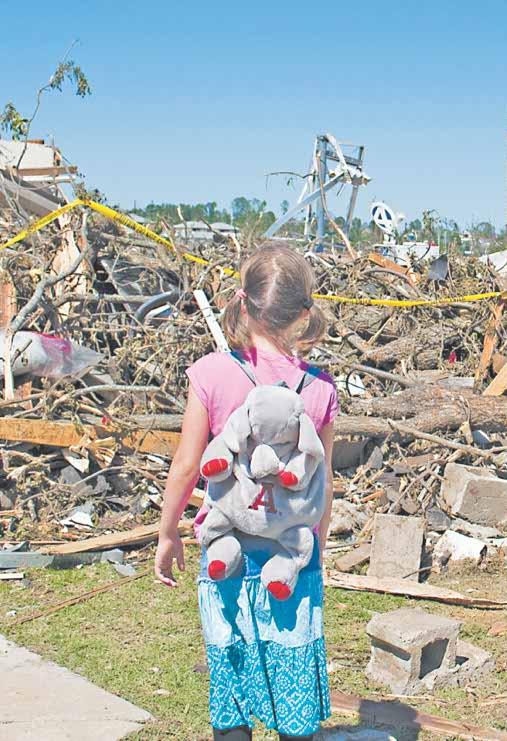While buildings begin to fill the lots demolished by the April 27, 2011, tornadoes, many wonder what the storm’s lasting impact on Tuscaloosa will look like. It takes more than a city planner to sketch the psychological toll of the tornadoes.
Led by John Lochman, a clinical psychology professor, and Nicole Powell, a research psychologist; a team observed the impact of the trauma on children’s functioning and behavior in the 90 days immediately following the natural disaster.
“There were some surprising findings that emerged there,” Lochman said. “So in general, across the entire sample, according to both teacher and parent ratings, the children initially had fewer internalizing problems, so they were less depressed, less anxious, and according to teacher reports, they were also having fewer acting-out problems, fewer externalizing problems.”
He also said there proved to be positive effects for parents as well.
“And from the parents, they were reporting that they were having less caregiver strain, so they were less distressed by having to take care of their children, and they were actually more consistent in how they handled discipline, which was a good thing,” Lochman said.
He said it has been speculated in the psychological literature that the reason for this improvement in functioning post-disaster is the flow of resources into the area, both physical, like food, water and clothes, and emotional care and support.
The project grew from a previous study, which explored the impact of different types of interventions, either in a group or individually, on the behavior of at-risk elementary students.
At-risk elementary students are those who display signs suggesting they may not adjust well in middle school.
In April 2011, Lochman’s team had pre-assessed three groups of children, given interventions to two groups and was about to intervene with the third group when the tornado hit. They are still analyzing the results of that study but have also used the tornado as a branching-off point to study the impact of traumatic natural disasters on children’s functioning.
“This is really a unique opportunity because we had all this pre-existing data,” Lochman said. “So we had information from parents’ ratings, teacher ratings, children’s self report on behavior and emotional functioning, and we had psycho-physiological measures, so we had measures of their skin conductance and their heart rate.”
Skin conductance and heart rate are indicators of stress-reactivity.
There have been other studies of a similar nature, including ones that observed the effect of hurricanes and a factory fire, Lochman said.
“Those studies have suggested that, in fact, major traumatic events can, in the long run, cause children to have internalizing problems,” Lochman said. “But it’s really unknown whether or not they create broad effects on children’s functioning in terms of acting-out behaviors as well, whether or not they affect children’s autonomic nervous system, their physiological reactions to things like stressors, and it was unknown how children’s parents responded, whether or not they responded more poorly after these kind of events than before.”
The study will continue to explore the impact of the tornado on these students for the next five years, thanks to a $1.9 million grant from the National Institute of Child Health and Human Development.
“I think it’s exciting to us to be able to follow this group of students for an additional five years, so really to get the opportunity to see how they’re doing,” Powell said. “For some of them, it will be nearly 10 years since they started with our project. So that’s exciting to have that amount of information for such a long time period.”
Undergraduate researchers have been assisting in the project by traveling to the homes of study participants to interview parents and children and play a role in shaping the questions that are given to the subjects.
“To me the most challenging part of the project is seeing how many people were traumatically affected by the tornado in the loss of their homes, loved ones and friends,” Brantley Porter, a junior majoring in nursing and a researcher on the project, said.









